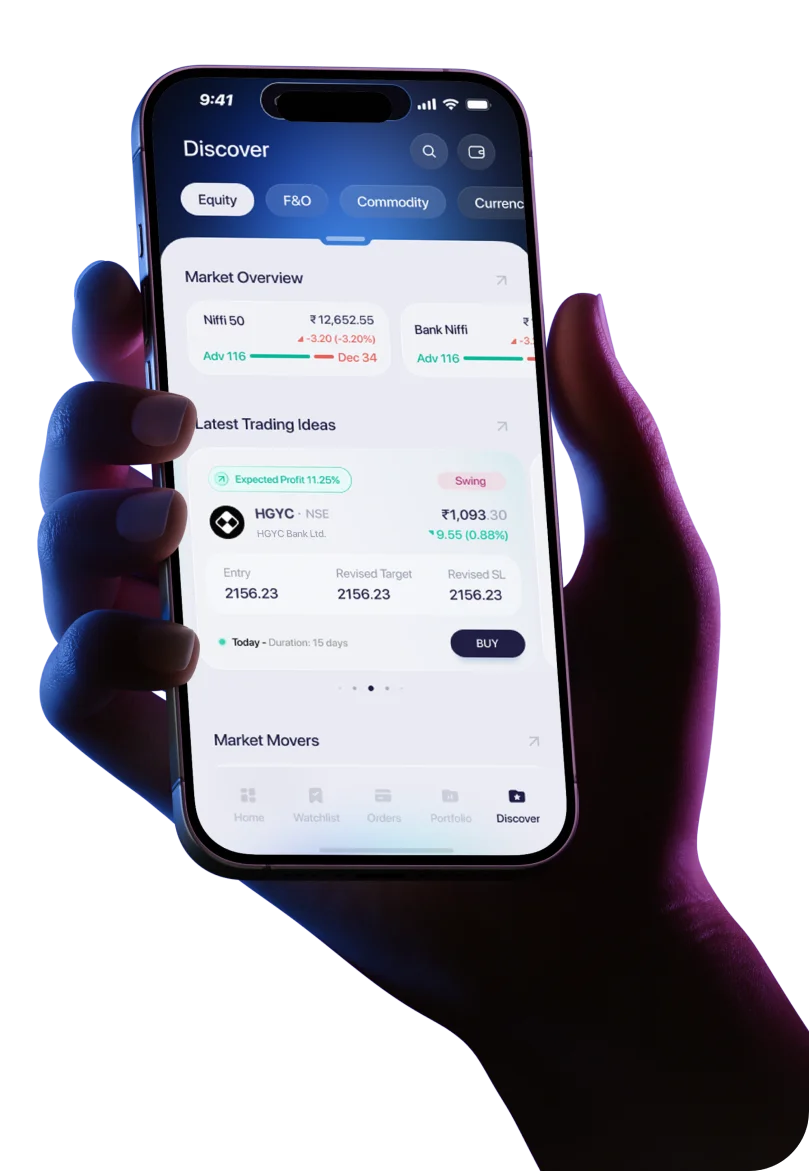Introduction
Imagine placing your trade once — and letting it execute automatically when the market price hits your desired level. No constant screen-watching. No missing opportunities. Just smart, disciplined investing.
That’s the power of Good Till Triggered (GTT) orders.
In today’s fast-moving markets, investors and traders often struggle to monitor price movements continuously. Between meetings, travel, and daily life, staying glued to market screens isn’t practical. This is where GTT orders step in as a modern, automation-friendly tool that simplifies trading and helps you stay disciplined.
By setting predefined trigger prices for buy or sell orders, GTT ensures your trades are executed only when market conditions match your strategy — even if you’re offline. Whether you’re a long-term investor waiting for the right entry point or a trader looking to lock in profits, GTT orders can make your trading life significantly easier.
- Understanding Good Till Triggered (GTT) Orders
A Good Till Triggered (GTT) order is a type of conditional order that remains active until the specified trigger price is reached. Once the market hits the trigger, your limit order is automatically placed.
In simple terms:
You set a target price → The system monitors it → Once reached, your order is executed — automatically.
Here’s how it differs from other order types:
Order Type | Validity | Execution Logic |
Market Order | Immediate | Executes instantly at current market price. |
Limit Order | Same trading day | Executes only at or better than your set price, but expires if not executed that day. |
GTT Order | Until manually cancelled or triggered | Executes automatically once the trigger price is hit — even days or weeks later. |
Unlike traditional limit orders that expire daily, GTT orders remain valid for an extended duration (up to one year on most broker platforms).
This makes GTT ideal for:
Swing traders, who want to buy or sell when specific levels are reached.
Long-term investors, who want to accumulate shares at lower prices without daily monitoring.
Part-time traders, who can’t track markets constantly but don’t want to miss opportunities.
In essence, a GTT order acts as your personal trading assistant — patient, precise, and emotion-free.
- Benefits of Using GTT Orders
- Automation = Peace of Mind
You no longer have to monitor price movements every minute. Once a trigger price is set, your order is automatically placed when that condition is met.
Example:
You want to buy Infosys at ₹1,450 (currently trading at ₹1,520). Set a GTT Buy trigger at ₹1,450 with a limit price of ₹1,448. If Infosys falls to ₹1,450 anytime in the coming weeks, your order will execute — even if you’re offline.
Encourages Disciplined Investing
Many investors hesitate or overreact during volatile markets. GTT helps maintain discipline — you predetermine your entry and exit without letting emotions interfere.
Protects Against Missed Opportunities
GTT ensures you don’t miss ideal price levels. If the stock moves sharply (say after market news or results), your order is ready to trigger instantly, preventing delays.
Useful for Both Buying and Selling
You can place GTT orders to:
Buy at lower, value-entry prices.
Sell when your target profit is achieved.
Protect gains by setting triggers below your current price.
Example:
You own HDFC Bank at ₹1,400 and want to book profit at ₹1,600. Set a GTT Sell trigger at ₹1,600. Once the stock touches ₹1,600, your sell order activates automatically.
Reduces Emotional Trading
With preset triggers, you’re less likely to make impulsive decisions based on temporary market noise.
GTT orders combine discipline + automation, the two key traits of successful traders and investors.
How to Place a GTT Order
Placing a GTT order is simple. Here’s a step-by-step guide using a standard trading platform (like Samco’s):
🔹 Step 1: Select Your Stock
Choose the instrument (stock, ETF, or index) you want to trade.
🔹 Step 2: Choose GTT Order Type
Select either:
GTT Buy – to purchase when price falls to your trigger.
GTT Sell – to sell when price rises to your trigger.
🔹 Step 3: Set the Trigger Price
This is the price at which your order will be activated.
For example, if Reliance is at ₹2,600 and you want to buy at ₹2,500:
Trigger Price: ₹2,500
🔹 Step 4: Set the Limit Price
This is the actual order price — the maximum you’ll pay for a buy, or minimum you’ll accept for a sell.
Continuing the example:
Limit Price: ₹2,495
🔹 Step 5: Confirm and Submit
Once confirmed, your GTT order remains active until:
It gets triggered and executed, or
You manually cancel it, or
The broker’s validity period (typically up to 1 year) expires.
🔹 Step 6: Review and Adjust
Markets change. Review your GTT orders periodically and adjust trigger or limit prices as needed.
GTT Orders on Samco Platform
On Samco’s trading platform, placing a GTT order is intuitive:
You can set triggers directly from the order window.
Get alerts when your GTT is triggered.
Manage multiple GTT orders easily through a single dashboard.
Modify or cancel anytime before trigger activation.
Samco’s system ensures high precision and minimal latency, so your triggers are executed reliably.
Common Scenarios Where GTT Orders Are Useful
📉 1. Buying During Dips
Suppose you want to accumulate Tata Motors but only if it falls below ₹950.
Set a GTT Buy trigger at ₹950 with a limit at ₹948. When the dip happens, your order executes automatically.
💰 2. Selling at Target Prices
Let’s say you bought ITC at ₹420 and plan to sell at ₹500.
You can set a GTT Sell trigger at ₹500, ensuring your profits are booked automatically even if you’re away.
⚡ 3. Protecting Profits
You bought Bajaj Finance at ₹6,800, and it’s now ₹8,000. To protect gains, set a GTT Sell at ₹7,900 — if prices drop suddenly, your order triggers and locks in profit.
📆 4. Long-Term Investing
Long-term investors can use GTT orders to accumulate quality stocks during market corrections without emotional decisions or timing stress.
Risks and Limitations of GTT Orders
While GTT orders are powerful, they come with a few limitations you should be aware of:
No Guarantee of Execution:
If the market price gaps past your trigger (for instance, overnight news causes a big jump or fall), your limit order may not get filled.
Broker-Specific Rules:
Each broker has different validity periods and GTT limits. For example, Samco allows you to manage multiple GTTs efficiently, but others may cap the number of active triggers.
Market Volatility:
During high volatility, prices can trigger and reverse quickly, leading to partial or no execution.
Need for Regular Review:
Corporate actions (dividends, splits, rights issues) may change stock prices — so GTT levels should be updated accordingly.
In short: GTT automates execution, not strategy. Investors must still review, plan, and adjust periodically.
Best Practices for Using GTT Orders
Set Realistic Triggers:
Avoid setting prices too far from market levels — extreme triggers might never activate.
Use Logical Limit Prices:
Keep a small buffer between your trigger and limit to improve execution probability.
Example: Trigger ₹1,000, Limit ₹998.
Avoid Overcrowding Orders:
Having too many active GTTs can clutter your strategy and increase confusion.
Review Periodically:
Check your GTT list weekly — cancel, modify, or replace based on market changes or company news.
Combine with Stop-Loss Strategy:
For traders, pairing GTT with stop-loss or trailing stops enhances risk management.
Monitor Corporate Actions:
Stock splits or dividends can reset trigger prices — always recheck after such events.
Maintain Sufficient Funds / Holdings:
Ensure your trading account has adequate funds (for buys) or holdings (for sells) to avoid rejections at trigger time.
By following these best practices, GTT orders can become a seamless part of your trading workflow.
FAQs About GTT Orders
Q1. Can GTT orders be used for all stocks?
Yes, most actively traded NSE/BSE stocks and ETFs support GTT. However, illiquid or suspended securities may not.
Q2. How long is a GTT order valid?
Typically up to one year from the placement date or until it’s triggered or cancelled.
Q3. Can I place multiple GTTs for the same stock?
Yes, but only within broker-specific limits. For example, you might set one Buy GTT and one Sell GTT at different levels.
Q4. Is GTT useful for beginners?
Absolutely. It helps beginners invest systematically without emotional bias or constant screen time.
Q5. Are there extra charges for GTT orders?
No additional cost — they’re treated like normal orders once triggered. Only standard brokerage applies.
Conclusion
In an era of fast, unpredictable markets, Good Till Triggered (GTT) orders offer the perfect mix of automation and control. They allow you to define your strategy once and let technology handle the rest — buying on dips, selling at targets, and protecting profits automatically.
But like any powerful tool, effectiveness lies in understanding it. By setting realistic triggers, monitoring periodically, and combining GTT with sound risk management, investors can trade smarter — not harder.
As an investor or trader, if you’re ready to simplify your market life, try using GTT orders on the Samco trading platform. Automate your trades, stay disciplined, and let your strategies work for you — even when you’re away from the screen.




 Easy & quick
Easy & quick
Leave A Comment?